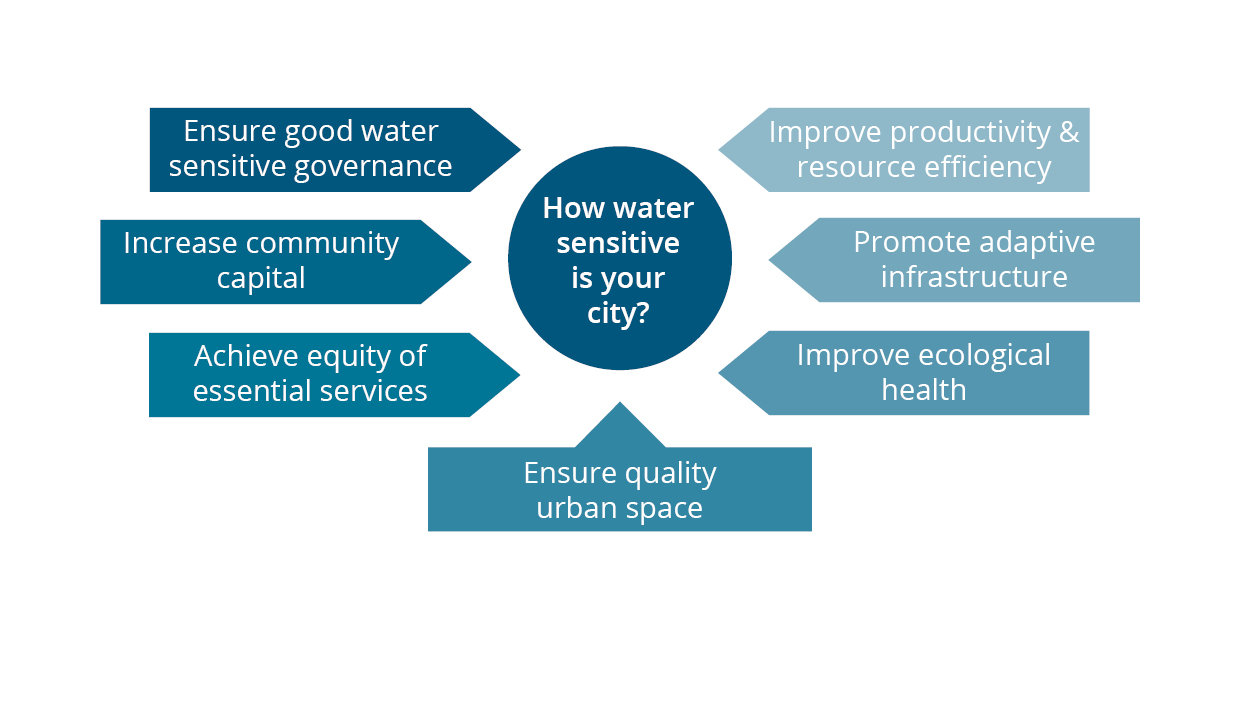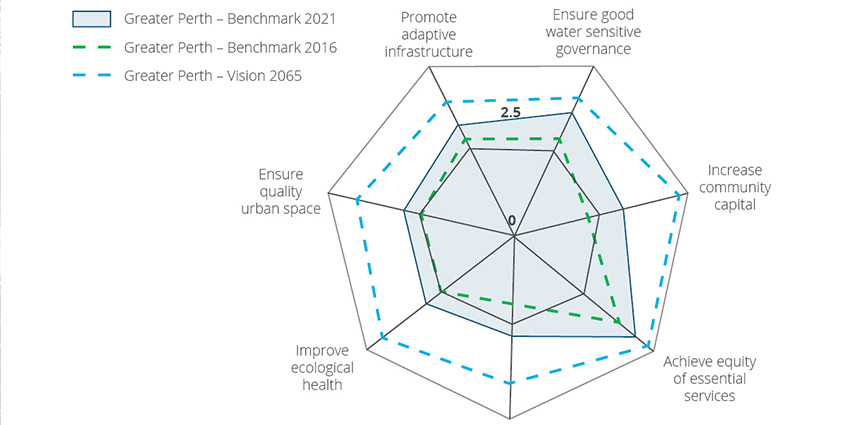This case study relates to Action 31 in the Kep Katitjin – Gabi Kaadadjan Waterwise action plan 3 delivered by the Department of Water and Environmental Regulation, Water Corporation and the Department of Biodiversity, Conservation and Attractions.
Our journey towards a water sensitive city has been accelerated by the tools, knowledge and partnerships created through our participation in the Cooperative Research Centre for Water Sensitive Cities (CRCWSC) (2012–21). The purpose of the CRCWSC was to help change the way we design, build and manage our cities and towns by valuing the contribution water makes to economic development and growth, our quality of life, and the ecosystems of which cities are a part.
The CRCWSC released the Water Sensitive Cities Benchmarking Index tool in 2016 and it has since been used by more than 70 cities and municipalities across Australia and overseas. The tool allows a city or local government area to measure performance against 34 indicators organised under seven goal areas that characterise a water sensitive city (Figure 1).
Benchmarking has been an essential step in creating a shared understanding of water management performance among Boorloo (Perth) and Bindjareb (Peel) stakeholders.
Greater Perth (the Boorloo and Bindjareb region) was the first to trial the benchmarking tool in 2016 and the first to re-benchmark in 2021.
The results showed that Greater Perth shifted from being slightly behind other capital cities’ water sensitive performance to become a leading water sensitive city. Our overall urban water management performance (total score across all seven goal areas) improved by 26 per cent over five years to 2021, compared with 2016 (Figure 2). This achievement reflects a significant effort by all stakeholders to adopt water sensitive/waterwise practices in a growing city being impacted by climate change.
The results reflect the commitment demonstrated across government through the Waterwise Steering Committee and Working Group to deliver the waterwise program and its long-term vision.
Improvements were also driven by the strong cross-sector collaboration achieved through the Water Sensitive Transition Network (WSTN), which was established in 2016 as a result of work under the CRCWSC. The WSTN is made up of a group of champions from state and local governments, industry, community and research organisations that have been working together with a clear ambition to transition Boorloo and Bindjareb to water sensitive communities through information sharing, greater alignment, cooperation, and coordination of activities and knowledge.
The WSTN received the Bronze Project Innovation Award at the 2022 IWA World Water Congress and Exhibition in Copenhagen. This award recognises innovations in governance and institutional transitions and the role this plays in supporting the circular and digital water economies.
Waterwise will continue to benchmark the Boorloo and Bindjareb region at appropriate intervals to track progress towards the 2030 targets.




